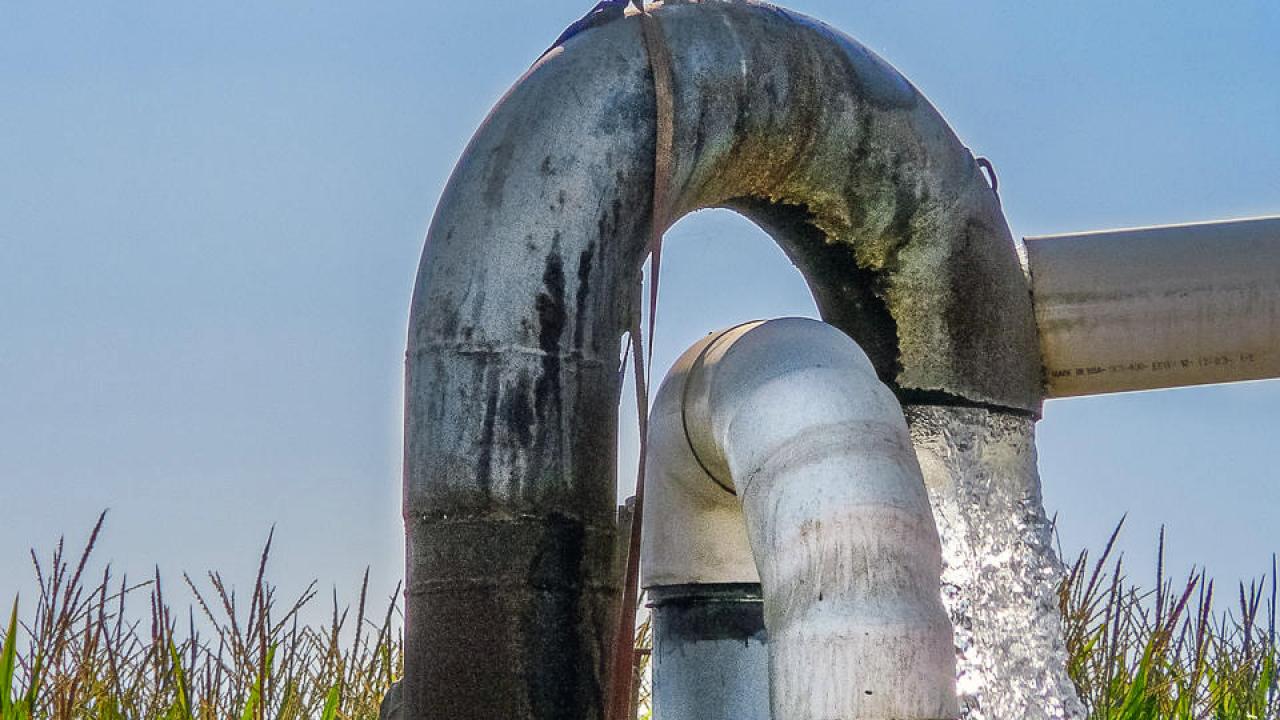
Groundwater usage threatens future supply
Nearly two-thirds of the state's water supply is currently being pumped from wells that are tapping into California aquifers.
In the special edition of California Agriculture released today (July 16), UC Cooperative Extension specialist and UC Davis professor Thomas Harter and UC Davis professor Helen Dahlke call attention to the stress being placed on California's aquifers as well as the catastrophic consequences of not having this hidden resource available in future droughts.
In the University of California's premiere journal for agricultural research, the groundwater experts make the following key recommendations:
- Groundwater is most effectively managed at the local or regional basin level, with support from the state.
- Local groundwater management entities must be given better tools, such as clear mandates to assess, measure, monitor and allocate their groundwater and control its extraction.
- The definition of groundwater sustainability can be set at the state level and translated into specific actionable thresholds that must be enforced locally, with a credible threat of state enforcement should the local efforts be unsuccessful.
- Much better data collection, analysis, reporting and data integration are needed to provide transparency, to support local management efforts and to properly inform the public. This requires much stronger planning and support within the DWR and SWB.
"Fundamentally, even more needs to be done," Harter and Dahlke write. "Local land-use decisions on urban and agricultural development, which have critical impacts on groundwater resources, must be consistent with groundwater management objectives. This will require significant communication between land-use and groundwater managers. Effective integration with water quality management and surface water management efforts, which are governed separately, is also required. And none of these efforts can occur without sustained funding through a mix of local and state sources."
In their outlook article, Harter and Dahlke also explore one of the most promising ideas to protect our aquifers: groundwater banking.
The idea is that during storms or flood control releases, excess surface water could be directed from streams via existing water conveyance systems onto dormant or fallow agricultural fields, which would then serve as infiltration basins. Solutions need to be developed to add significant recharge to California's aquifers, often during relatively short periods when excess surface water is available.
A 3-year project, funded by UC Division of Agriculture and Natural Resources, aims to look at the feasibility of such groundwater recharge activities by setting up pilot groundwater recharge field experiments, which would provide valuable data to address concerns about the costs and risks to crops, the influence these projects may have on groundwater levels and flows, and the possibility of recharging contaminated water or degrading groundwater quality by leaching contaminants such as nitrate from the vadose zone. Data collected could serve as a foundation for developing economic incentives at the local, state or federal level to acknowledge the landowner's service to the local community and California's water supply reliability.
Further reading: To read their entire article, "Out of sight but not out of mind: California refocuses on groundwater," and the special "Water efficiency" edition of California Agriculture, click here.
Additional materials:
- UC Cooperative Extension Groundwater Program
- Helen Dahlke's groundwater banking project
- California Water Action Plan: Improving Groundwater Management
- California Department of Water Resources report to the Governor's Drought Task Force [.pdf]
- California Water Plan Update 2013
- Association of California Water Agencies Recommendations for Achieving Groundwater Sustainability [.pdf]
Media Contacts:
- Thomas Harter, UC Cooperative Extension specialist and professor in the Department of Land, Air and Water at UC Davis, ThHarter@ucdavis.edu, (530) 752-2709
- Helen Dahlke, UC professor in the Department of Land, Air and Water at UC Davis, hdahlke@ucdavis.edu, (530) 302-5358